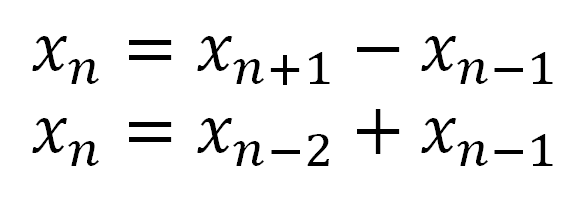CHECKING YOUR ANSWERS:
Many math books post the answers to selected questions in the back of the book. Most of my workbooks include the answers to every question in the back of the book.
A few students get a different form of the same answer, and mistakenly believe that the answer in the back of the book is wrong, when it’s really correct.
One common example occurs when the student gets a squareroot in the denominator, like:
The above answer isn’t in standard form. Most math teachers and authors would rationalize the denominator in order to express the answer in standard form. To rationalize the denominator, multiply both the numerator and denominator by the squareroot of 2, like the example below. Note that the squareroot of 2 times itself equals 2.
If you didn’t realize this, there is a simple way around it. Use a calculator. If you enter 1/sqrt(2) on your calculator, you will get 0.707106781. If you enter sqrt(2)/2 on your calculator correctly, you will get 0.707106781. Now you can see that the two seemingly “different” answers are exactly the same.
Unfortunately, many of the popular algebra solvers that you can find online don’t express their answers in standard form. So if you solve an algebra problem and get 1/sqrt(2) as your answer, an online algebra solver might give you the same answer, 1/sqrt(2), and then you might feel “confident” that the book’s answer, sqrt(2)/2, must be wrong because it’s different. But the book’s answer is actually the same answer. In fact, the book’s answer is better because it is expressed in standard form. It’s “better” in the sense that many teachers prefer for their students to express their answers in standard form.
Here is another common example. Suppose that a student obtains the following answer:
This answer isn’t in standard form. Most math teachers and authors would factor out the perfect square. Note that 8 equals 4 times 2. The number 4 is a perfect square, since the squareroot of 4 is 2 (put another way, 2 squared equals 4). You can factor out the perfect square as follows:
Again, you can check this with a calculator. Whether you enter sqrt(8) or 2*sqrt(2) on your calculator, either way you will get 2.828427125.
As a third example, suppose a student arrives at an answer of 9/6, but the book’s answer is 3/2. Once again, the student sees something different and assumes that one of the two answers must be incorrect. However, 9/6 equals 3/2. The difference is that the fraction 3/2 is in reduced form, whereas the answer 9/6 can be reduced. To see this, divide both the numerator and denominator of 9/6 by 3. You will get 9/6 = (9/3) / (6/3) = 3/2. If you use a calculator, you can check that 9/6 and 3/2 both equal 1.5.
This has been a problem for me with my workbook, Algebra Essentials Practice Workbook with Answers. An occasional review suggests that some of the answers are wrong. However, in every case that a student has mentioned a specific problem, and in every case that a student has contacted me by email to inquire about an answer, it has turned out that the student’s answer was, in fact, equivalent to the answer in the back of the book. The problem has usually been that the student didn’t rationalize a denominator, factor out a perfect square, or reduce a fraction.
As an author, it can be frustrating to know that the answers are correct, yet see a book review on Amazon suggesting otherwise. When I made the updated 2014 edition, an international math guru and I independently checked every single answer in this book with painstaking care. The answers are correct. The challenge is getting students to realize this.
On the product page, I worked out the full solutions, step by step, for some common questions that students have asked about, in order to help show that the answers are, in fact, correct. If students have questions, they are encouraged to contact me and give me an opportunity to teach them something that they might not have realized. Unfortunately, reviews that suggest that the answer key has mistakes discourage some students from using the book. Some customers would believe a random stranger’s review over a teacher with 20+ years classroom experience with a Ph.D. (If you think about it, if the student bought an algebra practice workbook, that student is probably not yet an expert on the subject of algebra.)
If you use any of my math workbooks and come to trust the answer key, please post a review to help other potential customers. If you suspect any of the answers may be wrong, please contact me (there is a contact me button my blog, for example) to ask about the answer. (It would also help if customers who know that the answers are reliable would vote on reviews as being helpful or not helpful.)
For my newest workbooks, like 50 Challenging Algebra Problems (Fully Solved), I’m now working out the full solution to every problem in the book so that students can see how I arrived at each answer. In many cases, I also offer alternative forms of the same answer (but it’s impossible to list every possible answer that a student might obtain). I hope that the full solutions will be helpful to students, and help them realize that the book’s answers are correct.
I have two new workbooks on the subject of calculus coming soon.
CHRIS MCMULLEN, PH.D.
Copyright © 2018 Chris McMullen, author of the Improve Your Math Fluency series of math workbooks
Newest releases (in math):
- 50 Challenging Algebra Problems (Fully Solved)
- Fractions Essentials Workbook with Answers
- 300+ Mathematical Pattern Puzzles
Improve Your Math Fluency. Build fluency in:
- arithmetic
- long division
- fractions
- algebra
- trigonometry
- graphing
- physics
- calculus (coming August, 2018)





























